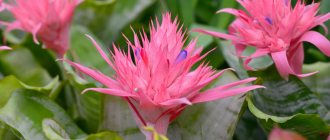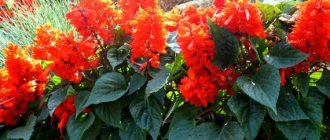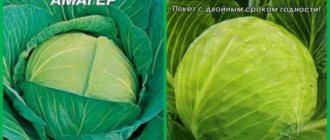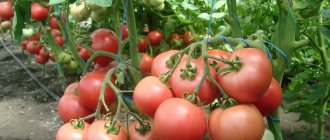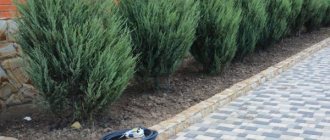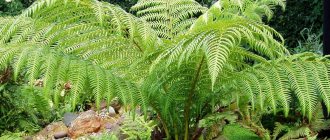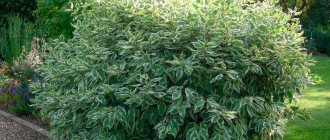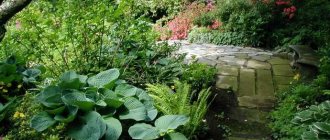Author: Natalia Category: Houseplants Published: August 01, 2013Republished: February 1, 2019Last edits: November 16, 2020
- Fragrant pelargonium / Pelargonium graveolens
Botanical description
Pelargonium (lat. Pelargonium) is a plant of the Geraniaceae family. In nature, there are up to 350 species of plants, which are usually herbaceous perennials, but there are also succulent plants and shrubs. Homemade pelargonium is surprising in that it can have a diametrically opposite effect on people: some people feel sick from the scent of Pelargonium, while others it calms and relaxes. Only a few types of Pelargonium have been cultivated, but this does not mean that there is nothing to choose from. In addition to their decorative qualities, Pelargoniums are also useful - they are used in medicine and perfumery. Pelargonium essential oil is used not only as a flavoring agent for soap or perfume, but is also an excellent means of purifying the air from harmful impurities and microorganisms.
Description and history
Pelargonium is a herbaceous perennial plant belonging to the geranium family and brought from South Africa to Holland, and then to France and England. The flower has erect, slightly branched stems and reaches a height of 30-80 cm. The shape of the leaves is different for each pelargonium variety. The inflorescences are umbrella-shaped; they can have either few or many flowers of different shades (you can learn about different varieties of pelargonium, principles of care, and also see photos of flowers here).
Pelargonium has an antibacterial and soothing aroma. In addition, the flower is believed to bring mutual understanding to the family. Read more about the medicinal properties of pelargonium in our article.
Important! The main difference from cold-resistant garden geranium is that pelargonium is a heat-loving and indoor plant.
Briefly about cultivation
- Flowering: from May to October.
- Lighting: bright sunlight.
- Temperature: in spring and summer – 25-30 ºC, in winter – no higher than 14 ºC.
- Watering: in spring and summer - 3-4 days after the top layer of soil in the pot dries. In winter - when the earthen ball dries to a third of its depth.
- Humidity: normal for residential premises.
- Feeding: in spring and summer - once every two weeks with mineral fertilizer for flowering plants. After flowering is completed, feeding is stopped.
- Dormant period: from November to March.
- Pruning: annually during the period until early March.
- Replanting: young plants - annually, and adults - when the roots completely entwine the earthen ball.
- Substrate: humus, leaf, turf soil and sand in equal parts.
- Reproduction: seeds and cuttings.
- Pests: whiteflies and aphids.
- Diseases: root rot, gray rot, loss of attractiveness of leaves due to improper maintenance conditions.
- Properties: some types of pelargonium are poisonous!
Read more about growing pelargonium below.
Caring for pelargonium at home
Lighting
Indoor pelargonium is one of the plants that not only tolerate direct sunlight well, but also need it. Conclusion - windows on the south side are most suitable for pelargonium. But, despite this, the plant grows well even on the north side, the main thing is that the daylight hours are long, otherwise the shoots will stretch. In summer, pelargonium is taken out onto the street or balcony, if possible. The room with pelargoniums needs to be ventilated, because... She needs fresh air for normal development.
Temperature
In summer, the temperature should be between 25 and 30 °C, i.e. room summer temperature. In winter, the temperature should be quite low, which is necessary for normal flowering of pelargonium. So throughout the winter, it is advisable not to rise above 14 °C.
Watering pelargonium
The pelargonium plant at home must be watered three to four days after the top layer of soil has dried. You can check by deepening your finger 1-2 cm into the substrate. It's summer. In winter, watering is carried out in such a way that the soil does not simply dry out. At low air temperatures and high soil humidity, the roots of pelargonium can rot, which, in turn, can lead to disease of the entire plant and its death.
- Features of caring for the Decembrist
Spraying
Indoor pelargonium flowers do not suffer from dry air, so it is not necessary to spray pelargonium. If the temperature is very high in summer, then it won’t hurt to spray the leaves a little.
Top dressing
Feeding pelargonium is carried out once or twice with an interval of two weeks a couple of months after transplantation. They are fed to improve flowering, for which phosphorus fertilizers are used. Fertilizing with organic fertilizers is undesirable - the plant does not absorb them well.
Trimming
Pelargoniums indoors are pruned annually, leaving shoots with only 2-4 nodes. This is done in order to get a lush flowering bush. In pelargonium, it is necessary to remove leaves that have turned yellow or shriveled. To do this, use a very sharp knife, and under no circumstances tear off the leaves, since the torn edges may begin to rot. To prevent this from happening, the cut area is sprinkled with crushed charcoal. Leaves need to be trimmed so that the base of the petiole remains on the plant.
Transplanting pelargonium
Young pelargoniums need to be replanted annually, and older pelargoniums need to be replanted when the roots completely encircle the pot. As usual, drainage is poured onto the bottom of the pot, and a soil mixture is poured on top: humus, turf and leaf soil, peat and sand - all in equal parts.
Growing from seeds
When propagated by seeds, pelargoniums may lose varietal characteristics, which must be taken into account when planting. For sowing, make up a soil mixture of equal parts of peat, sand and turf soil, pour it into a low container. For rapid emergence, the temperature should be around 22 °C, then the seeds will germinate within two weeks. Pelargonium seedlings are planted in individual small pots, and when the pot becomes small, they are transferred to pots 9 cm in diameter. With proper care, the first flowering is observed in just over a year.
Propagation by cuttings
Homemade pelargonium is best propagated by apical cuttings. Cuttings are cut and rooted either at the end of winter or at the end of summer. The tip of the cutting is cut off, and the cut is made at an angle just below the node. The cuttings must have at least three leaves. Three to five leaves are best. The cuttings are left to dry for several hours, and before planting, the cutting sites are treated with a root formation stimulator and crushed charcoal. A substrate of equal parts of turf soil, sand and peat is poured into the container, and the cuttings are planted around the perimeter. You can pinch the cuttings to make the pelargonium flower lush. The container with the cuttings is placed in a place with bright, diffused light and the soil is regularly sprayed. After 15-20 days, the cuttings should take root. When the seedlings become stronger, they are planted in individual pots. It should be taken into account that the abundance of flowering depends on the size of the pot: the larger the pot, the sparser the pelargonium blooms. Pelargonium will bloom 5-7 months after rooting.
- Oleander (Nerium) – care, photos, types
Virulence
Not all pelargoniums are poisonous, but it is best to wash your hands after handling the flower unless you know whether the species is poisonous.
Application
For treatment, you can use white, red, pink geranium. But pelargonium with bright red shades of the flower is considered the most healing.
ethnoscience
There are many recipes for traditional medicine based on geranium. Most of them are simple: just pick a leaf of a plant and use it for treatment.
You can use the following recipes:
- stop regular nosebleeds with a cotton swab soaked in geranium juice;
- for ear pain, mash a plucked leaf of a plant and place it in your ear;
- if you have a runny nose, place a few drops of pelargonium juice in each nostril;
- to normalize blood pressure, it is recommended to attach a fresh piece of paper to your wrist;
- An infusion will help get rid of urolithiasis: fill the glass a third with pelargonium leaves, fill it to the top with boiling water, let it brew for about an hour; the strained infusion is divided into 3 parts and taken on an empty stomach 3 times a day;
- for sore throat, cough, you need to grind 20 g of leaves of a medicinal plant, pour 1 glass of boiling water, leave for 7-8 hours; gargle with the prepared infusion;
- To normalize sleep, place several flowerpots with pelargonium in the bedroom.
Cosmetology
Geranium is used in cosmetology in the form of extract and essential oil. Natural antiseptic and antioxidant tones and rejuvenates skin of any type:
- dry - returns healthy fresh color and saturates with moisture;
- oily - relieves inflammation, removes acne, normalizes sebum production;
- fading - strengthens, nourishes, smoothes wrinkles, restores elasticity.
Thanks to the activation of lymph flow and blood circulation, geranium has an anti-cellulite effect, removes stretch marks and scars.
Decoction and tinctures of geranium
To prepare tinctures, decoctions and infusions, take dry or fresh geranium leaves.
Recipe for a decoction of pelargonium leaves:
- You need to take 1 tbsp. crushed dry or fresh flower leaves and pour 1 cup of boiling water.
- Simmer over low heat for 1 minute.
- Let it brew under the lid for about half an hour, then strain.
Recipe for infusion of geranium leaves:
- Pour 2 tbsp. l. dry or fresh leaves with 1 glass of boiling water.
- Let it brew for 25-30 minutes.
- Strain.
Recipe for geranium tincture with alcohol:
- Pour 3 tbsp. crushed leaves of the plant 100 ml of vodka.
- Keep the mixture in a dark place for a week at room temperature.
- Strain the tincture.
Diseases and pests
Pelargonium does not bloom. If the plant is not sick or affected by pests, then this could be caused by wintering at high air temperatures and bright light.
The edges of the lower leaves of pelargonium dry out and turn yellow. Pelargonium does not have enough moisture in the soil - it is necessary to increase the frequency of watering.
The lower leaves of pelargonium wither, turn yellow and rot. Watering too often means the soil does not have time to dry out between waterings. The leaves need to be cut off and the cut area sprinkled with crushed coal powder.
The base of the pelargonium stem turns black. This is root rot. She is also “Black Leg”. Read in the “Diseases” section to learn how to deal with it.
Swellings on pelargonium leaves. Excess moisture in the soil. Pelargonium should be watered a couple of days after the top layer of soil has dried.
Gray rot on pelargonium. Pelargonium does not tolerate stagnation of water in the substrate. Improper watering - gray rot is right there!
- How gerbera blooms at home
Pelargonium pests. Whiteflies and aphids most often feed on pelargonium.
Disinfection and soaking of seeds
Before growing pelargonium at home, you need to properly prepare the seed. It is necessary to partially remove the seed shells to speed up the growing process. To avoid damaging the seed too much, it is better to use sandpaper. Clean only the top layer with it.
As a disinfectant for seeds, a weak concentration of potassium permanganate solution or peroxide is used. After disinfection, it is necessary to soak them in water at room temperature so that they swell for 2 hours.
Kinds
Fragrant pelargonium / Pelargonium graveolens
An evergreen, highly branched shrub, pubescent, growing up to 1 m in height. The leaves are pubescent, divided into 5-7 lobes, green. They smell nice. The inflorescences are umbrella-shaped, the flowers are numerous and pink. The flowering period is throughout the summer.
Pelargonium capitatum / Pelargonium capitatum
The species is represented by evergreen subshrubs, growing in height up to a little over 0.5 m. Shoots and leaves are pubescent. The shoots are straight. The leaves seem to be crumpled, divided into 3-5 parts, green. The inflorescence is umbellate. The flowers are sessile, grow in large numbers, and are pinkish in color (with shades of purple). Flowering period is mid to late summer. The leaves smell.
Fragrant pelargonium / Pelargonium odoratissimum
Shrub, does not shed leaves, short shoots. The leaves are up to 5 cm wide, heart-shaped, with slightly ragged edges, covered with very short and soft hairs, and smell very pleasant. The inflorescences are umbellate. Flowers are collected in 8-10 pieces, pink and white.
Pelargonium zonale / Pelargonium zonale
Evergreen meter-long subshrubs with pubescent and fleshy shoots. The leaves are usually entire and only sometimes slightly lobed, green in color with a brown border along the edge. Sessile red flowers are collected in multi-flowered inflorescences. Blooms from late spring to early autumn.
Pelargonium cucullatum
An evergreen pubescent shrub native to South Africa. Leaves on long petioles, green. The inflorescence is umbrella-shaped. The flowers are red-violet, numerous. The flowering period occurs at the end of summer - beginning of autumn. There are varieties with double leaves.
Pelargonium grandiflorum / Pelargonium grandiflorum
Evergreen meter-long shrub with a large number of branches. The leaves are either lobed or dissected, kidney-shaped, rounded, or slightly pubescent or without hairs. Up to 3 white flowers with red veins grow on a peduncle; flowers grow up to 3-4 cm in diameter. Flowering occurs in mid-spring - early summer.
Pelargonium curly / Pelargonium crispum
Evergreen shrubs with a large number of branches, grow up to 0.5 m. The leaves grow in two rows, the shape approximately resembles a heart-shaped, dense, the edges are ragged-wavy, jagged. Blooms in mid to late summer. Flowers grow on short stalks of two or three. The leaves smell nice.
Pelargonium inquinans / Pelargonium inquinans
One and a half meter evergreen shrub with fleshy shoots. The leaves are round, kidney-shaped, dark green. The inflorescences are umbellate. Pedicels are short. The flowers are red. Depending on care, it can bloom in late spring, summer, autumn and winter.
Pelargonium crithmifolium
These are succulent deciduous plants with thick creeping shoots. The leaves are divided into lobes, pinnately shaped and bluish in color, reaching 8 cm in length, and may be covered with hairs or may be hairless. The inflorescences are umbrella-shaped. Pedicels are 1.5-2 cm long, flowers grow in 5-6 pieces, white; pharynx with red spots.
Pink pelargonium / Pelargonium radens
Evergreen one and a half meter shrubs with a large number of pubescent shoots. The leaves are pubescent on both sides: with soft hairs below and hard hairs on top; the edges of the leaves are curved; the leaves are very deeply divided. They smell very nice. The peduncle is umbellate, pubescent. The flowers are pink with dark veins, growing several on a peduncle.
Angular Pelargonium / Pelargonium angulosum
Evergreen pelargonium growing up to 1 m in height. The leaves look a bit like an oak leaf, but the leaf lobes are wavy rather than straight. They grow on a short petiole. The inflorescence is umbellate. There are many flowers, most often bright red. With proper care, flowering occurs at the end of summer - mid-autumn.
Pelargonium quadrangular / Pelargonium tetragonum
This species is a deciduous shrub, growing up to 60-70 cm in height. The stems are straight, tetrahedral, light green or tinged with gray. The leaves are heart-shaped, petiolate, covered with sparse hairs, and grow up to 5 cm wide; The edge of the leaf is reddish-brown. The flowers usually consist of 5 white petals (with a cream or pink tint) - 3 large petals at the top, and 2 smaller ones at the bottom.
Pelargonium corymbose / Pelargonium peltatum
An ampelous evergreen shrub. Shoots are pubescent or bare. The leaves are fleshy, thyroid-shaped, shiny, green, also pubescent or glabrous, divided into five lobes, the edges are smooth. The flowers are white, pink, red, collected in groups of several in umbrella-shaped inflorescences. Blooms from mid-spring to late summer.
Reproduction methods
Pelargonium reproduces in three ways:
seeds - you need to sow seeds from December to February and wait for germination three weeks later;
- dividing the bush - you need to dig up the bush, carefully divide it, plant each part in a separate container, then lightly compact and water the soil;
- cuttings - it is necessary to prepare cuttings up to 10 cm long (in the case of a dwarf variety - up to 3 cm), cutting off healthy and strong shoots, then plant them in a flowerpot with drainage at the bottom and soil consisting of peat, perlite, compost and calcined garden soil , compact the soil near the cuttings and wait for the roots to appear in 2-3 weeks.
Cuttings can also produce roots if they are placed in water in a warm room for 2-3 weeks.
